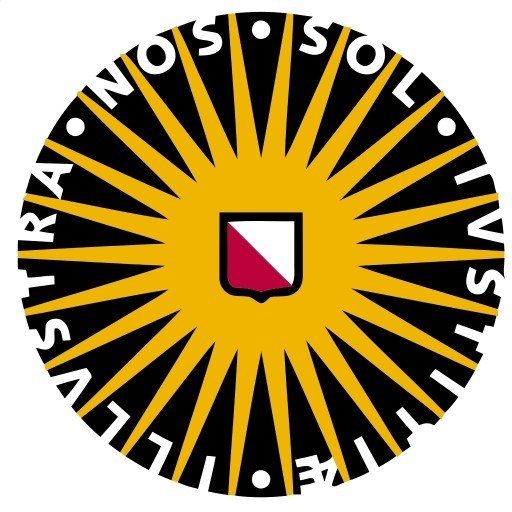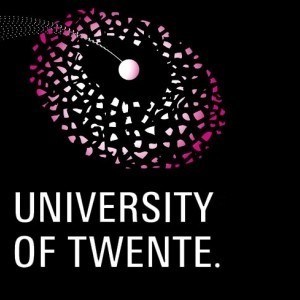Photos of university / #utrechtuniversity
The Bachelor’s programme in Earth Structure and Dynamics at Utrecht University offers students a comprehensive understanding of the Earth's physical properties, internal processes, and the dynamic forces shaping our planet. This multidisciplinary programme combines aspects of geology, geophysics, and physical geography to provide a solid foundation in Earth sciences. Students will explore the Earth's crust, mantle, and core, studying how tectonic plates move, how earthquakes and volcanic eruptions occur, and how various geological phenomena influence the planet's surface and its development over time. The programme emphasizes both theoretical knowledge and practical skills, including fieldwork, laboratory experiments, and data analysis, preparing graduates for careers in research, environmental consultancy, natural disaster management, or further academic studies. The curriculum covers key topics such as seismic imaging, mineralogy, geodynamics, and the geological history of the Earth, enabling students to develop a detailed understanding of Earth's structure and dynamic behavior. Utrecht University's state-of-the-art facilities, close collaboration with research institutes, and opportunities for international exchange enrich the learning experience. Graduates will possess critical thinking skills, scientific expertise, and a global perspective on Earth's processes, equipping them to contribute effectively to addressing environmental challenges and advancing scientific knowledge about our planet's evolution. The programme typically takes three years to complete and culminates in a Bachelor of Science degree, opening pathways toward master's programmes or specialized careers in Earth sciences.
Earth Structure and Dynamics is a comprehensive master's programme at Utrecht University designed to provide students with in-depth knowledge of the Earth's interior and the processes that shape our planet. This programme combines theoretical geology, geophysics, and geodynamics with practical skills in data analysis, modeling, and laboratory research. Throughout the course, students will explore a wide range of topics, including plate tectonics, seismic wave propagation, mantle convection, crustal deformation, and the geophysical methods used to study the Earth's internal structure.
The curriculum is structured to foster both fundamental understanding and applied expertise. Students will undertake advanced courses in mineralogy, petrology, geophysical imaging, and numerical modeling, gaining the ability to interpret complex geological and geophysical data. Laboratory sessions and fieldwork form a vital part of the programme, offering hands-on experience with research techniques and instrumentation.
In addition to disciplinary knowledge, the programme emphasizes the development of critical scientific skills, such as data analysis, problem-solving, and scientific communication. Collaboration with researchers and professionals from academic and industry settings prepares students for multidisciplinary projects and future careers in geoscience, academia, or environmental consultancy.
The programme also offers opportunities for specialization within areas such as seismology, geodynamics, or mineral resources, allowing students to tailor their studies according to their interests and career goals. The final semester typically involves a research project or thesis, where students contribute to current scientific questions and gain valuable experience in academic research.
Graduates of the Earth Structure and Dynamics programme will be well-equipped to understand the complex processes of the Earth's interior, contribute to solving geological and environmental challenges, or pursue further research leading to a PhD. With a rigorous academic approach and a focus on both theoretical and practical aspects, this programme prepares students for the dynamic field of Earth sciences and positions them for impactful careers in science and industry.
The Master's Programme in Earth Structure and Dynamics at Utrecht University requires applicants to hold a bachelor's degree or equivalent qualification in a relevant field such as Geology, Earth Sciences, Physics, or a related discipline. Applicants must demonstrate a solid foundation in the natural sciences, including courses in mineralogy, petrology, geophysics, and geology. Proficiency in mathematics and statistics is essential, as the programme involves complex data analysis and modeling. Candidates are expected to have completed coursework in physics, mathematics, and computer programming to be prepared for the analytical components of the programme.
Additionally, the programme values research experience or practical fieldwork skills that show an applicant's ability to engage with geoscientific research. Application requirements typically include submitting a certified copy of previous degree certificates, a curriculum vitae highlighting relevant experience, and a motivation letter explaining the applicant's interest in Earth structure and dynamics and how the programme aligns with their career goals.
English language proficiency is mandatory, with proof via standardized tests such as IELTS or TOEFL for non-native speakers. The minimum required scores are generally an IELTS overall band score of 6.5, with a minimum of 6.0 in each component, or a TOEFL iBT score of 90 or higher. Applicants may also be asked to provide letters of recommendation from academic referees familiar with their academic or research capabilities.
The admissions process considers academic performance, relevant experience, motivation, and language proficiency. International students are encouraged to apply well before the deadline to complete visa procedures if necessary. The programme's entrance requirements aim to ensure that students are academically prepared to undertake advanced research and coursework related to the Earth's internal structure, dynamics, geophysical processes, and tectonic activity.
The financing of the Earth Structure and Dynamics Master’s programme at Utrecht University is primarily covered through a combination of government funding, tuition fees paid by students, and additional financial support options. Dutch and international students pay tuition fees established by the Dutch government and Utrecht University, which are subject to annual updates. European Union (EU) and European Economic Area (EEA) students benefit from the statutory tuition fee rates, which are generally lower than the institutional rates for non-EU/EEA students. Utrecht University also offers various scholarship opportunities for talented international students, including the Utrecht Excellence Scholarships and other faculty-specific grants, which can significantly reduce the financial burden for eligible candidates.
Students are encouraged to explore external funding options, such as Erasmus+ grants for mobility and exchange programs, as well as national and private scholarships available for students from different countries. Additionally, the university provides student loan options through Dutch financial institutions for eligible students, which can cover living expenses and tuition costs during their period of study. The tuition fees and financial support systems are designed to ensure that a diverse group of students can access the programme regardless of their financial background, promoting inclusivity and international mobility.
The programme’s infrastructure, lectures, research facilities, and faculty support are funded by government contributions and university budgets, ensuring high-quality education without additional direct costs to students beyond tuition and personal living expenses. Utrecht University maintains a transparent and comprehensive financial policy to support students, including clear communication about tuition rates, scholarship deadlines, and application criteria. This financial structure reflects the university’s commitment to fostering academic excellence and making advanced education in Earth sciences accessible to a global student body.
The Master's programme in Earth Structure and Dynamics at Utrecht University offers an in-depth exploration of geological processes that shape our planet. This programme is designed for students interested in understanding the physical and chemical properties of Earth's interior, as well as the dynamic processes that influence seismic activity, plate tectonics, and the Earth's evolution over geological timescales. The curriculum combines theoretical knowledge with practical skills, allowing students to analyze complex datasets, interpret seismic and geological information, and develop models of Earth's interior. Throughout the programme, students gain expertise in geology, geophysics, and geodynamics, enabling them to contribute to scientific research or work in applied areas such as natural hazard assessment and resource exploration. The programme typically includes coursework in seismology, mineral physics, tectonics, and numerical modeling, supported by state-of-the-art laboratories and research facilities. Collaboration with international research institutes and participation in fieldwork are also integral components, providing students with valuable hands-on experience. Graduates of this programme are well-equipped for careers in academia, governmental agencies, the energy sector, or environmental consultancies. The interdisciplinary nature of the programme reflects Utrecht University's commitment to integrating scientific disciplines to better understand Earth's complex systems. Overall, this Master's programme prepares students for advanced research or professional roles by fostering critical thinking, analytical skills, and a profound understanding of Earth's dynamic interior.







